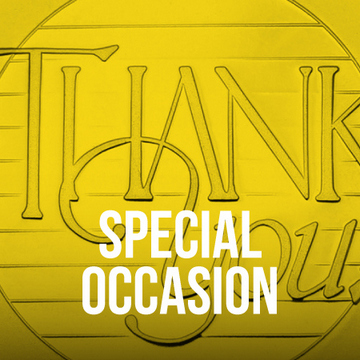
United States coinage: where do we start? There are many ways to go about this, but simply put, why not start at the beginning?
This new blog series, Evolution of a Denomination, aims to take you through the changes coinage from the United States has gone through dating back to the very first coins produced at the original United States Mint in Philadelphia, Pennsylvania. One of those coins? The lowest face value coin struck by the Mint: the half cent.
Half Cents (1793-1857)
After the United States Constitution was ratified in 1788 by the majority of the states, many of its founders felt the need for a national Mint with the sole purpose of creating a new identity among a brand new economy. In 1792, the Coinage Act was passed on April 2nd and made into law establishing the very first United States Mint. Philadelphia was chosen by Congress as it was, back then, the nation’s capital.
The denomination of the half cent was one of the first coins to be authorized by the Coinage Act. The weight of the copper coin was to have been 132 grains, but it was later changed to 104 grains by the Act of January 14, 1793, before being minted. It’s face value equaled that of 1/200th of a dollar and is a difficult coin to come by. There are four different major design changes over its 60+ years in production, including the Liberty Cap design that changed almost immediately after it was produced.
Liberty Cap, Head Facing Left (1793)
While the designer for the original half cent design appears to be unknown, engraver Henry Voight engraved the copper coin. Weighing 6.74 grams and measuring 22 millimeters in diameter, the original design featured a left-facing Lady Liberty who’s hair was depicted being windblown on the obverse. The reverse would feature an elaborate wreath design surrounding the words ‘HALF CENT’. There were only 35,334 coins produced in 1793 and in January of 2014, a MS66 Brown was sold at auction for $920,000.
Liberty Cap, Head Facing Right (1794-1797)
The next year of production for the half cent looked different as designer and engraver (also the first Chief Engraver of the United States Mint) Robert Scot would take the design in literally a different direction. Lady Liberty’s profile on the obverse would change from facing left to facing right in 1794. The reverse would remain with a wreath. Over 81,000 coins would be minted with the Liberty Cap, Head Facing Right design in all, but there would end up being two varieties: the ‘normal head’ and the ‘high-relief head’. High relief coins are struck deeper and harder than the normal strikes making the features such as the hair or other details stand out. The composition of the half cent from 1794 remained 100% copper but the diameter of the coin increased to 23.5 millimeters.
In 1795, the designer of the coin changed again with John Smith Gardner at the helm. While the overall design remained the same, Gardner would make small changes including a Pole to Cap variety and a Punctuated Date. This would, of the 139,690 total coins produced in 1795, produced four different varieties including a ‘Lettered Edge, With Pole’, ‘Lettered Edge, Punctuated Date’, ‘Plain Edge, Punctuated Date’, and ‘Plain Edge, No Pole’. From 1794-1797, this design would continue to have varieties come from each year it was produced until the design would eventually get a major overall after a three-year hiatus.
Draped Bust (1800-1808)
Picking back up in 1800 with the half cent, the design on the obverse would change to a Draped Bust courtesy of designer Gilbert Stuart and engraver Robert Scot. The composition and diameter would remain the same as the weight would decrease to just 5.44 grams from 6.74. Stuart’s drawing was the design that prompted bas-relief models that would be replacing the Flowing Hair designs. The newer version of Lady Liberty would actually appear on other coins besides the half cent.
The Draped Bust design of the half cent would prompt a number of varieties from the years it was in production. A little over 3.4 million half cents were produced with the design with the reverse of the laurel wreath generally continuing during the production despite minor variety changes.
Classic Head (1809-1836)
In 1807, a German engraver by the name of John Reich was given the title of Assistant Engraver at the United States Mint with the support of Mint Director Robert Patterson. He was immediately given the job to redesign all the coinage, including the half cent that would come to life in 1809. The previous Draped Bust design would be replaced with the Classic Head design by Reich that would feature a less busty Lady Liberty facing left on the obverse of the coin. Her hair would be curled and tied with a band that would cover her ear and fall down the back of her neck towards her bust inscribed with the word “LIBERTY”. Seven stars line the outer edge of the coin to her left and six stars are to her right with the date fixed on the bottom of the half cent. The reverse shows the classic wreath encompassing the coin’s denomination “HALF CENT” with the words “UNITED STATES OF AMERICA” inscribed along the outer rim of the coin.
A total of 3,517,912 half cents were produced with the Classic Head design between the years 1809 and 1836. A number of varieties were identified in the 27 years they were produced. For example, an ‘1811, Wide Date’ was sold at auction in January 2014 in a MS66 Red Brown condition for $1,121,250.
Braided Hair (1840-1857)
Half cents were produced in spurts after the year 1811. The production of the coin peaked in 1835 but discontinued in 1836 after the denomination was not getting the orders it needed to for the Mint Director to justify the production of the coins. Director Patterson wanted to wait until the stored coins were distributed.
During this time also, it was customary for the United States to give visiting dignitaries gifts of Proof sets. In 1840, Director Patterson included the half cent in these Proof set gifts and signaled for Chief Engraver of the United States Mint Christian Gobrecht to create dies for this sole purpose. Gobrecht would end up using the same Braided Hair design he created for the 1839 cent coin. Gobrecht’s design features a Lady Liberty with her hair braided into a bun in the back of her head with ringlets cascading down the back and down to the base of her bust.
Half cents produced from 1840-1849 were made only as proofs and were used to exchange as gifts to diplomats or “well-connected” collectors. While the business strike half cents that were being distributed every year were from stock on hand from the 1834 and 1835 mintages, 1849 saw the supply of half cent coins declining and small orders were finally starting to be placed and production would then start back up for the denomination. Minting of the coin would continue until 1857 when they finally cut all ties with the half cent denomination in general.
A little over half a million coins were produced in total in the Braided Hair design for the Uncirculated half cents.
Source: NGC Coin; The Official 2021 Red Book







